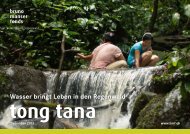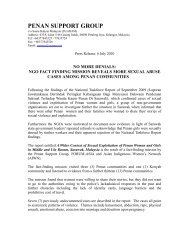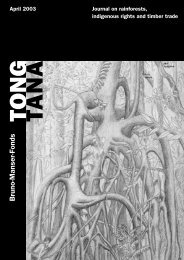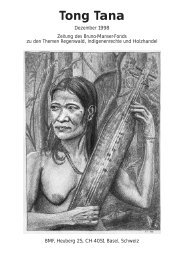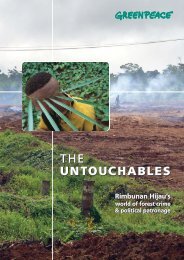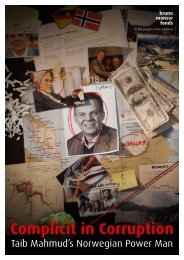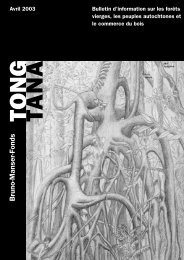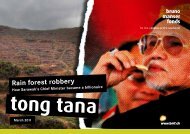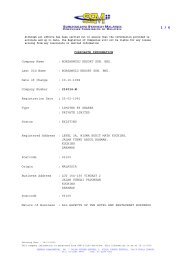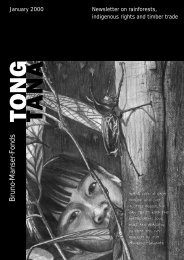statement of claim
statement of claim
statement of claim
You also want an ePaper? Increase the reach of your titles
YUMPU automatically turns print PDFs into web optimized ePapers that Google loves.
ights over the land in Ba Jawi and the vicinity. They hunted andgathered food from the forests and lived on sago (uvut) as theirstaple food. The plaintiffs are presently practicing these rights overthe same land.3.2 As far as the Plaintiffs can recall, the earlier leaders <strong>of</strong> theirnomadic Penan tribe were Opo Munyai, Opo Peniyiban, OpoJaleng, Opo Muai, Opo Sawen, Opo Tevu, Opo Luti, and OpoNuhun.3.3 By and through their customary practice most characterized bymolong, tribal groups <strong>of</strong> the nomadic Penan lived in and withindistinct territories. Traditional dwelling huts called lamin toro wereleft behind as distinct marks <strong>of</strong> earlier settlements.3.4 When the Penans developed the system <strong>of</strong> setting up satellite sagoharvesting camps, they started to be semi-nomadic, about 100years ago.Ba Jawi4. The present headman <strong>of</strong> the Ba Jawi Penans, Lija Agang, is a directdescendant <strong>of</strong> Opo Munyai and Opo Penyiban. He succeeded his father,Agang Ngiung when the latter passed away. In turn, his father succeededBangau as the headman. Since the time <strong>of</strong> Opo Munyai, the Ba JawiPenans have settled in the watersheds <strong>of</strong> Baram River, mostly alongSungai Jawi. Opo Munyai was succeeded by Opo Peniyiban as headman<strong>of</strong> the Ba Jawi Penans.Headman Agang Ngiung was born on the Kara River, a sub-tributary <strong>of</strong>the Jawi River where he raised his family with his wife, Julan Upa. Sagopalm trees on the right side <strong>of</strong> the river mouth <strong>of</strong> Kara River were used toproduce uvut, a sago starch staple <strong>of</strong> the Ba Jawi Penans. These sagopalm trees are still found today at Kara River.The Ba Jawi Penans bury their dead in their ancestral land, along theconfluence <strong>of</strong> streams or small rivers and identified to be at Upper Nyoke,Ma’ut, Lamah and Likam, all being sub-tributaries <strong>of</strong> the Jawi and BuangRivers.The Selaba and Buang River areas were the location where the Plaintiffsand their ancestors roamed to hunt and collect and harvest jungleproduce. In addition, the Plaintiffs’ ancestors had roamed the forests to asfar as the Moh, Pelutan and Selungo Rivers. In their sojourns, they metand befriended the Kayans and Kenyahs.3



